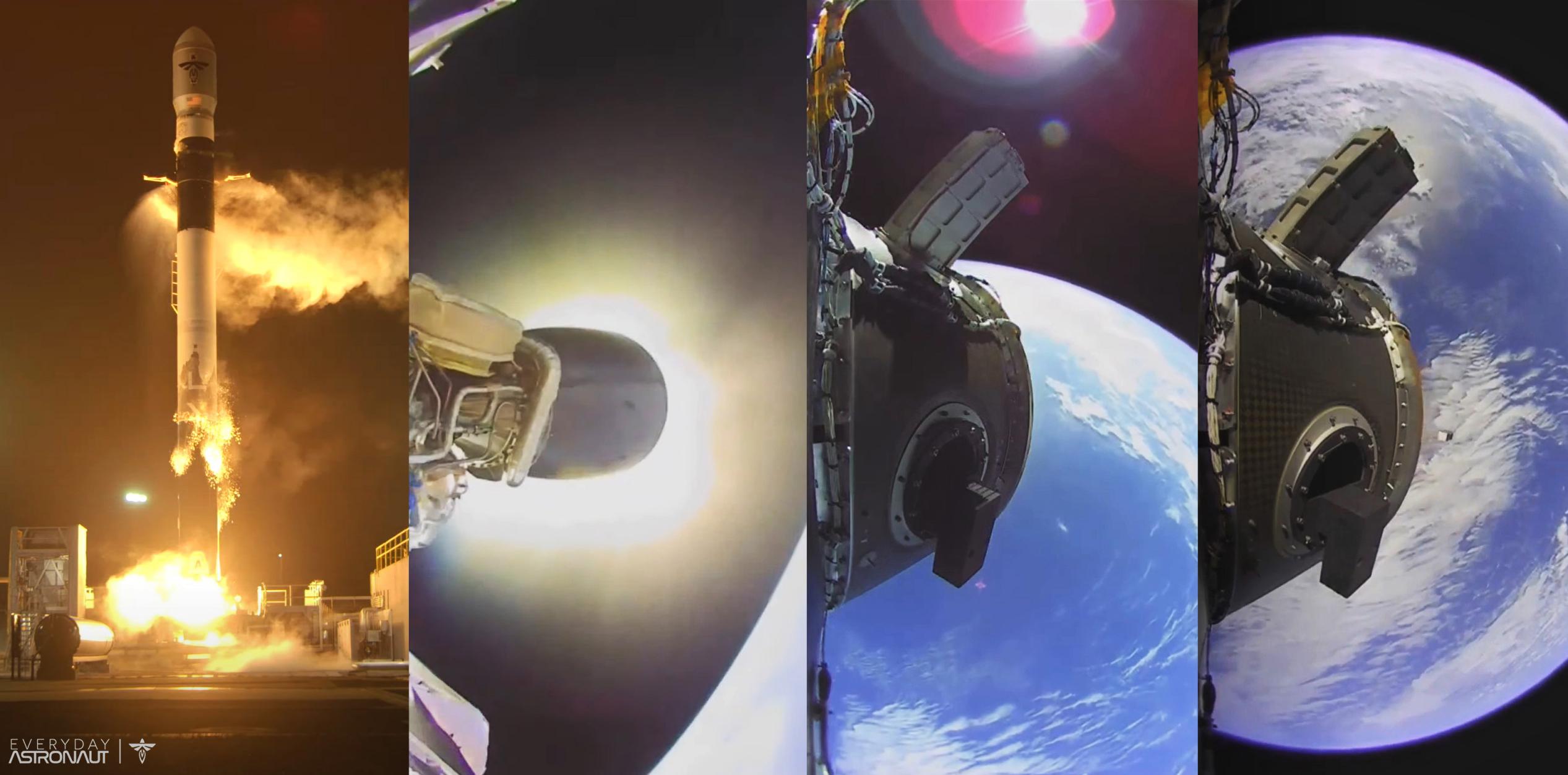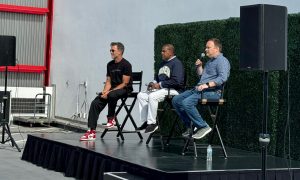Firefly Aerospace’s Alpha rocket has successfully reached orbit on its second try, cementing the company as the victor of a mostly unintentional race between three American NewSpace startups.
After weeks of delays and three aborted launch attempts on September 11th, 12th, and 30th, the second carbon-fiber Alpha rocket lifted off from its Vandenberg Space Force Base (VSFB) SLC-2W launch pad at 12:01 am PDT (07:01 UTC) on October 1st. According to Firefly, the resulting mission was a “100%…success”, indicating that it achieved all of the company’s objectives – an outcome far from guaranteed on the second flight of any orbital rocket.
In a familiar display, Alpha’s suborbital booster lifted the upper stage, fairing, and payload most of the way out of the Earth’s atmosphere within a few minutes. After a mechanical system pushed the two stages apart, the upper stage successfully ignited its lone Lightning engine, ejected the two-piece fairing (nose cone) protecting its payloads, and continued uphill for another five minutes before reaching a stable parking orbit around 250 kilometers (~160 mi) above Earth’s surface.
After successfully reaching orbit, Alpha’s upper stage even made it through a more than 90-minute coast phase and reignited for a brief second burn. Finally, Alpha managed to deploy all seven of the satellites it lifted off with. As a test flight, there was no guarantee that those payloads would end up anywhere other than the Pacific Ocean, so the successful deployment was likely a very pleasant surprise for all satellite operators involved in the mission.
Nicknamed “Into The Black” by Firefly, it was the company’s second Alpha flight and followed an unsuccessful attempt on September 3rd, 2021. During the rocket’s first launch, a loose cable caused one of its booster’s four main Reaver engines to fail almost immediately after liftoff, dooming the attempt. However, the rest of the booster fought for more than two minutes to keep the mission on track before a termination system destroyed the rocket, demonstrating otherwise excellent performance and gathering invaluable data and experience.
Firefly wasted no time putting that experience to good use. Compared to the first vehicle, the booster and upper stage for Alpha’s second flight sailed through preflight testing and completed their respective proof tests (a combined wet dress rehearsal and static fire) on their first tries. That smooth processing bodes well for the timing of Firefly’s third Alpha launch, although the company’s official accounts have strangely been almost silent after Flight 2’s success.
Soon after launch, third-party data showed that Alpha deployed its seven payloads into a 210 x 270 kilometer (130 x 170 mi) orbit. Firefly’s official launch page had stated that the target orbit was 300 kilometers (~185 mi) and called the second ignition of the upper stage a “circularization burn.” Given that the final orbit is far from circular and has an apogee a full 10% below that stated target, it wasn’t clear the rocket had performed exactly as expected. The orbit’s very low perigee means that the customer satellites Alpha deployed could reenter Earth’s atmosphere and burn up after a matter of weeks in space, rather than months or years.
But according to Bill Weber, who became CEO of Firefly less than a month before the launch, Alpha “deployed [Firefly’s] customer payloads at exactly the spot [the company] intended,” strongly implying that the strange final orbit was intentional.
Additionally, official footage Firefly released after the launch suggests that Alpha’s upper stage Lightning engine nozzle narrowly missed the booster’s interstage during stage separation. Had the drifting booster hit that nozzle, it would have likely caused the upper stage to begin tumbling and potentially ended the mission well before orbit. Thankfully, it didn’t, and it should be relatively easy to fix whatever caused the Alpha booster to begin slipping sideways so quickly after separation.
Alpha is the largest all-carbon-fiber rocket ever built. It stands 29.5 meters (~95 ft) tall, 1.8 meters (6 ft) wide, weighs 54 tons (~120,000 lb) fully fueled, and can produce up 81 tons of thrust (~180,000 lbf). Alpha can launch up to 1.17 tons ~(2600 lb) of useful cargo to low Earth orbit (LEO), making it the first successful entrant in a new and rapidly growing field of privately-developed rockets designed to launch 1-2 tons to orbit.
Coincidentally, Firefly found itself neck and neck with two other prospective US providers, Relativity Space and ABL Space. For several months, all three companies were aiming to successfully launch their one-ton-class rockets to orbit sometime in the late summer or early fall. But despite delays, Firefly – already more than a year ahead after its first launch attempt in 2021 – still beat Relativity and ABL Space to flight and did so successfully, securing itself a small but significant milestone in the history of private spaceflight.
The timeline for Relativity’s first 3D-printed Terran-1 rocket launch is no longer clear after a hurricane disrupted its preflight test campaign. ABL Space, meanwhile, has been forced to sit with its first RS1 rocket ready to launch for weeks while waiting on the FAA to complete paperwork and grant it a launch license. Had the FAA moved faster, it’s entirely possible that ABL Space could have launched before Firefly’s Alpha Flight 2, although the odds of success are much lower for RS1 during its debut. Pending that regulatory approval, ABL Space intends to launch RS1 out of Kodiak, Alaska as early as mid-October.
Firefly has yet to offer a substantial statement after the successful launch, which means that the company has provided no information about its next steps or next launch. Per prior statements, the company is working to upgrade its Texas factory to enable up to six Alpha launches in 2023.











